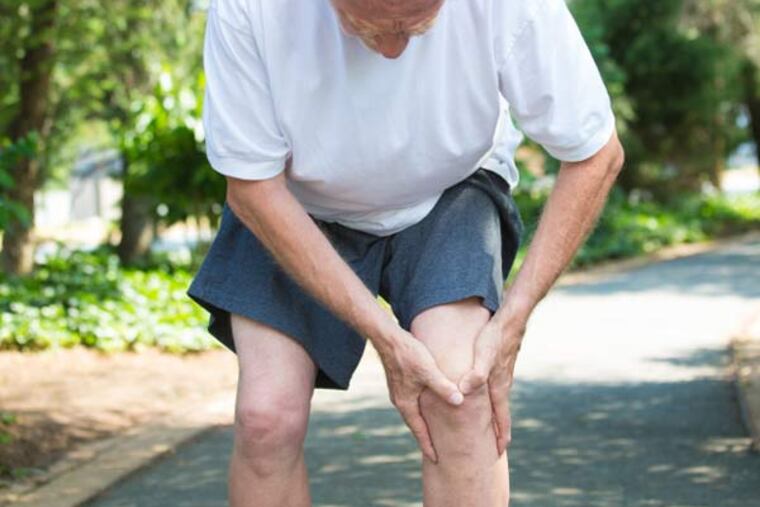Q&A: What can I do to limit joint pain from arthritis?
While people may think that exercising with arthritis leads to joint pain, exercise, done in the right manner, may actually help reduce arthritic symptoms.

Q: I was diagnosed with arthritis. What can I do to limit joint pain?
A: Arthritis occurs when the cartilage on the ends of bones that make up our joints becomes damaged and worn down. This happens when the cells in your cartilage release enzymes and free radicals, which lead to inflammation and degradation.
There are more than 100 types of arthritis affecting more than 50 million American adults, according to the Arthritis Foundation. Osteoarthritis, in which the cartilage wears down over time, is one of the most common forms of arthritis. Rheumatoid arthritis (RA), another common form of arthritis, is an autoimmune disease that causes the immune system to attack healthy cartilage tissue. Other common causes of arthritis include injury, gout, infection and aging.
Symptoms of arthritis include pain, swelling and stiffness, which may range from mild to severe.
Although people may think that exercising with arthritis leads to joint pain, exercise done in the right manner may actually help reduce arthritis symptoms. Low-impact exercise conditions muscles and increases joint mobility, which may help control pain and stiffness. Examples of low-impact exercise for those living with arthritis include bicycling, swimming, walking, and using an elliptical machine or rowing machine.
However, certain exercises may damage the joints and increase pain and swelling. High-impact exercises, such as running and squatting, are not recommended for those with lower extremity arthritis because they put excessive stress on the joints. Limiting participation in high-intensity sports may help relieve arthritis symptoms.
The most immediate arthritis treatment options involve lifestyle changes to reduce stress on affected joints. Those with occupations involving frequent or repetitive movements, kneeling, squatting and heavy lifting are encouraged to modify their work style to limit their arthritis symptoms.
Weight loss is another lifestyle change that may help reduce joint pain caused by arthritis. Excess weight places additional stress on the joints, potentially making symptoms worse. Losing weight may relieve stress on the joints, which may lessen pain and inflammatory flare-ups.
Additional at-home treatment options include:
Hot and cold therapy. For acute, arthritic flare-ups, ice may provide pain relief and control swelling. For baseline pain and stiffness, heat therapy may relax the surrounding tendons and muscles.
Walking aids. Canes, walkers and other mobility aids may offload painful, swollen arthritic joints.
Braces. Knee braces may offload knee joint stress.
Medication: Acetaminophen (Tylenol), anti-inflammatories (Advil, Aleve, ibuprofen, aspirin) and topical capsaicin may be effective for arthritic pain relief.
Other treatment options include physical therapy, acupuncture, injections (including steroids or platelet rich plasma) and joint replacement surgery.
If you are experiencing joint swelling, stiffness or pain, talk to your doctor immediately to find the best treatment option. Always consult with a physician before initiating any weight loss or exercise program.
Bradley A. Fink is a board-certified orthopedic surgeon at Nazareth Hospital in Northeast Philadelphia.